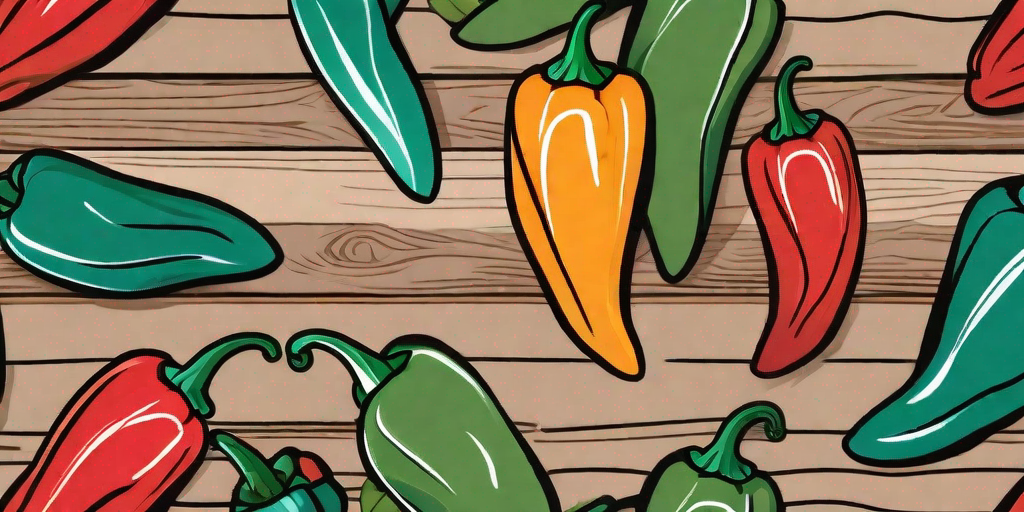
Welcome to the world of culinary adventures, where even the smallest ingredient can make a big difference. Today, we're going to explore the fiery world of peppers and how you can dry them at home. This isn't just about adding a kick to your meals; it's about embracing a tradition that dates back thousands of years. So, buckle up, spice enthusiasts, and let's get started.
The History of Drying Peppers
The practice of drying peppers dates back to the ancient civilizations of Central and South America. The Aztecs, Mayans, and Incas all used this technique to preserve their crops and add flavor to their food. It's a tradition that has stood the test of time, and for a good reason. Drying peppers not only extends their shelf life but also intensifies their flavor and heat.
Today, dried peppers are a staple in many cuisines around the world. From the smoky chipotle of Mexico to the fiery bird's eye chili of Thailand, dried peppers add a unique depth of flavor that fresh peppers simply can't match. And the best part? You can easily dry your own peppers at home, and we're going to show you how.
Choosing the Right Peppers
Before you start, it's important to choose the right peppers. Not all peppers are created equal, and some are better suited for drying than others. Thin-walled peppers like cayennes and habaneros are ideal because they dry out quickly and evenly. Thick-walled peppers like bell peppers and jalapenos can also be dried, but they take longer and require more attention to prevent mold.
When choosing peppers, look for ones that are ripe and free of blemishes. The better the quality of the pepper, the better the end result will be. And remember, the heat of the pepper will intensify as it dries, so choose your peppers accordingly unless you want to accidentally breathe fire like a dragon.
The Drying Process
1. Air Drying
Air drying is the simplest and most traditional method of drying peppers. All you need is a needle, some thread, and a well-ventilated area. Simply thread the peppers through their stems, hang them up, and let nature do the rest. This method can take several weeks, but it's well worth the wait. The slow drying process allows the peppers to retain their color and flavor, resulting in a superior end product.
However, this method is best suited for climates with low humidity. If you live in a humid area, you might want to consider the next method.
2. Oven Drying
If you're short on time or live in a humid area, oven drying is a great option. Simply spread your peppers out on a baking sheet and bake them at a low temperature. The key here is to dry the peppers slowly without cooking them. This method can take several hours, but you'll have dried peppers by the end of the day.
Keep in mind that oven drying can fill your house with spicy fumes. This can be pleasant if you love the smell of peppers, but it can also cause coughing and sneezing if you're not used to it. So, make sure to ventilate your kitchen well.
Storing Dried Peppers
Once your peppers are dried, it's important to store them properly to maintain their flavor and prevent mold. The best way to store dried peppers is in an airtight container in a cool, dark place. This will keep them fresh for up to a year, although they'll start to lose their flavor after about six months.
If you want to keep your dried peppers longer, you can grind them into a powder and store them in a spice jar. This is a great way to make your own homemade chili powder or paprika. Just remember to label your jars, unless you enjoy the surprise of accidentally adding habanero powder to your morning smoothie.
FAQs
Can I dry peppers in a dehydrator?
Absolutely! A dehydrator is a great way to dry peppers, especially if you're drying a large batch. Just make sure to follow the manufacturer's instructions, as the drying time can vary depending on the model.
Can I dry any type of pepper?
While you can technically dry any type of pepper, thin-walled peppers are the best candidates for drying. Thick-walled peppers can be dried, but they take longer and are more prone to mold.
How can I use dried peppers?
Dried peppers can be used in a variety of ways. You can grind them into a powder, rehydrate them in hot water, or use them as is in soups, stews, and sauces. The possibilities are endless!
Conclusion
Drying peppers at home is a fun and rewarding process. Not only will you end up with a stash of flavorful dried peppers, but you'll also gain a new appreciation for this versatile ingredient. So, why not give it a try? Spice up your life and start drying peppers today!
Remember, the world of peppers is as diverse as it is spicy. So, don't be afraid to experiment with different types and flavors. Who knows? You might just discover your new favorite spice. Happy drying!











